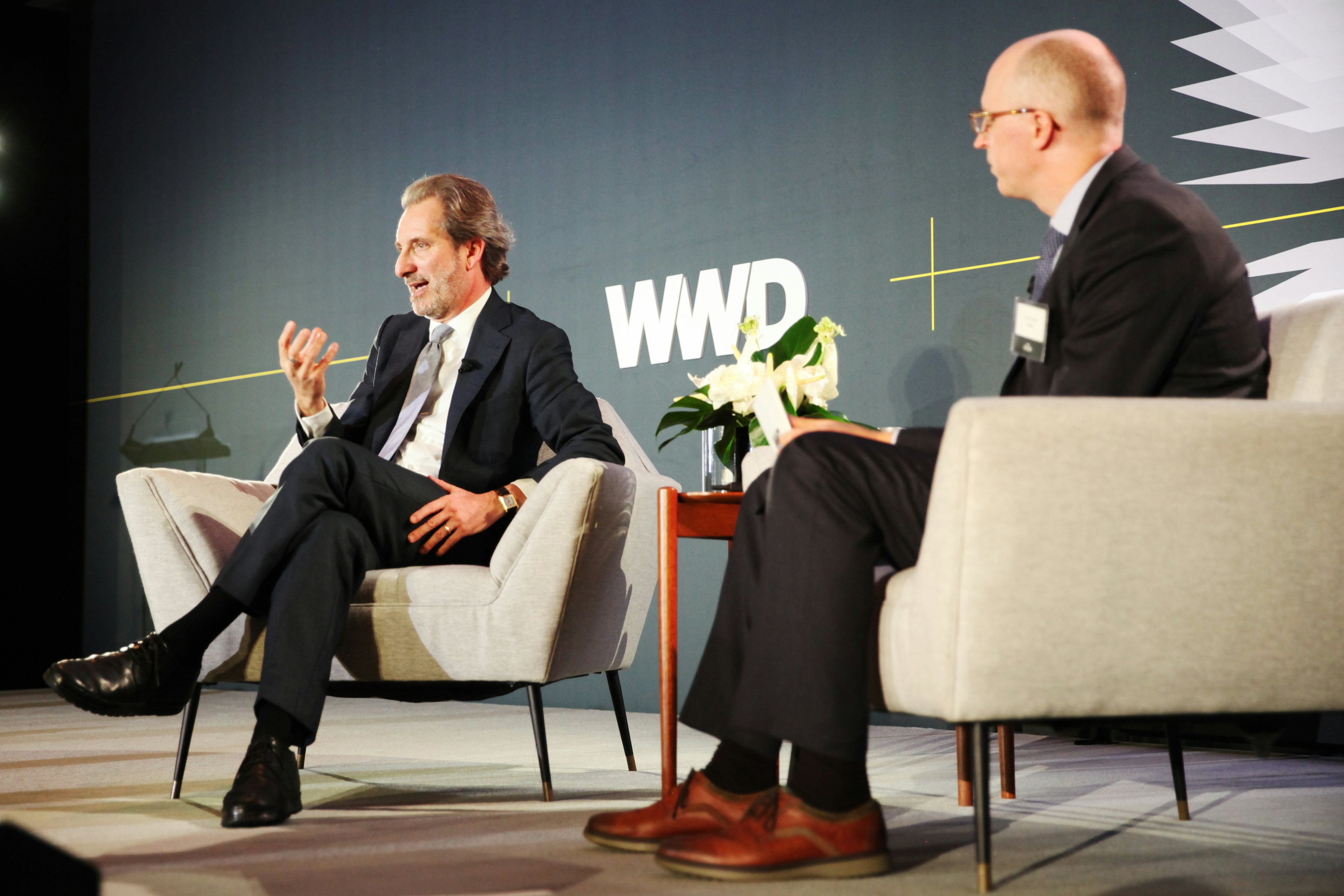This year’s WWD Apparel + Retail CEO Summit themed, Movers + Makers, included a host of leaders from different backgrounds from the retail and fashion industry. Topics ranged from disruptive business models and new leadership imprints to discussions on emerging markets and new generations. Below, Jing Daily highlights some key takeaways from the two-day event.
Kerby Jean-Raymond from Pyer Moss on Rethinking the Excitement of Retail#
As one of the hottest young fashion talents, Kerby Jean-Raymond, founder and creative director of Pyer Moss, believes that making a brand’s shopping experience unique at different store locations is key when it comes to forming a brand’s identity. According to Jean-Raymond, the most straightforward solution is to give different products to different stores. “Retail is about the scavenger hunt. Retail brands are in the end, not competing with other retailers or brands but Instagram,” Jean-Raymond said. “It’s about getting people to engage and get their attention.”
Calvin McDonald from Lululemon on Traction in China and Putting Community First#

Lululemon’s positioning as a platform that fosters physical and mental growth has found solid ground in China. The brand’s success there has been in large part due to China’s booming health and fitness scene. McDonald believes that an experiential brand should be fulfilled through four dimensions: stores, events, digital, and community. He noted the importance of igniting a community through experiences beyond the four walls of a store. “While others are trying to figure out how to make their four-wall environment experiential and hope for people to come in, we are looking at that as an end,” McDonald said.
Additionally, McDonald believes Lululemon's additional growth will be will in men’s, digital, and international expansion, especially in China. The brand has also created a high-end collaboration this year with the London-based fashion brand, Roksanda, to give their higher-value customers a unique offering.
Alessandro Bogliolo from Tiffany & Co. on Balancing Growth in Emerging Markets with Legacy#
Tiffany & Co. is at the center of an industry conversation, thanks to rumors that LVMH will acquire the 182-year-old American legacy jewelry brand. At WWD’s Summit, Tiffany’s CEO, Alessandro Bogliolo, remained humble about the brand’s revitalization success in all of its markets.
The brand has moved from low single-digit growth to consistent double-digit growth of over 25% in mainland China over the last six quarters. This is due to a strategy that includes increased marketing spending in China, the collaboration between the New York marketing team with Tiffany’s local Chinese team, and a greater network of stores there. As of now, the brand has upgraded seven stores in China, recreating an authentic Tiffany experience without having to fly to New York City.
In the end, though, Mr. Bogliolo commented that as a legacy luxury jewelry brand, Tiffany’s fundamentals are less about disrupting emerging markets, and more about executing the vision of the founder and to keep it relevant with younger generations.
John McPheters from Stadium Goods on Redefining Resale Through Storytelling and Globalization#

As the premium sneaker marketplace leader, Stadium Goods’ success is fueled by a strong company mission.
Following its success in the U.S. market, the company headed to China with a mindset of localization. Stadium Goods’ domestic success lies in its innovative thinking and a solid grasp of omnichannel commerce and thoughtful activations. “Traditional ways of thinking about the omnichannel experience are about the store and e-commerce. We think of it as extended marketplace partnerships, pop-ups, initiatives and more,” McPheters said. At home, the brand has collaborated with high-profile singers and celebrities such as DJ Khalid and ASAP Ferg, resulting in high consumer engagement.
In China, however, content strategy and channels are highly localized. Stadium Goods has partnered with Tmall since August 2016 and is also currently on the Chinese social media application, Little Red Book. The brand produces various content for China from short- and long-form video to weekly live broadcasts. “All these together are huge drivers for our brand,” McPheters said. In addition, he pointed out the importance of gamification and coupons in driving sales in China. In all, McPheters sees a large crossover in high-end fashion, sneakers, and streetwear and believes that we’re still the early days of this trend.
Patrice Louvet from Ralph Lauren on Winning New Generations#
Ralph Lauren CEO, Patrice Louvet, emphasized the importance for legacy brands to be on new platforms. In short, to be where the next generation of consumers are from a marketing standpoint and communicate with them in a way they want to be communicated with. For the U.S., Ralph Lauren currently is on the short-form mobile video app, TikTok, as an extension to gain traction with Gen Z consumers, though platforms such as WeChat are a key communication point for reaching the young Chinese as well.
Louvet added that sometimes traditional brand marketing can still work its magic on younger generations with the help of new communication platforms. For example, when it comes to China, Weibo’s live streaming services together with traditional content from runway shows gained unexpected reactions from consumers. Ralph Lauren’s Spring 2020 runway show gained over 21 million views from young Chinese consumers via Weibo’s live stream.
Guram Gvasalia from Vêtements on Growing without Losing Excitement#

Guram Gvasalia, co-founder and CEO of Vêtements, takes an inquisitive approach when it comes to growing the company. Building a long-term relationship with the customer has become something rare today, but Gvasalia believes that brands should look beyond revenue numbers. “You can have one hundred customers who each spend ten thousand dollars at one hundred stores or one customer who spends one million dollars at one store. It is very important in my opinion to grow within a store,” Gvasalia shared.
Gvasalia’s Vêtements will keep pursuing an organic growth path. “I think we live in the world today where it becomes too quick for things to develop and grow. Because of the Instagram feed, our perception of reality has become extremely short-term," Gvasalia said. Putting the brand everywhere reminds people of the brand’s existence, but eventually takes away the excitement that comes with discovering the brand. In addition, Vêtements announced a new platform that will support young design talents, and where the brand will act as a Big Brother and mentor. The first part of the project is set to launch in 2020.
